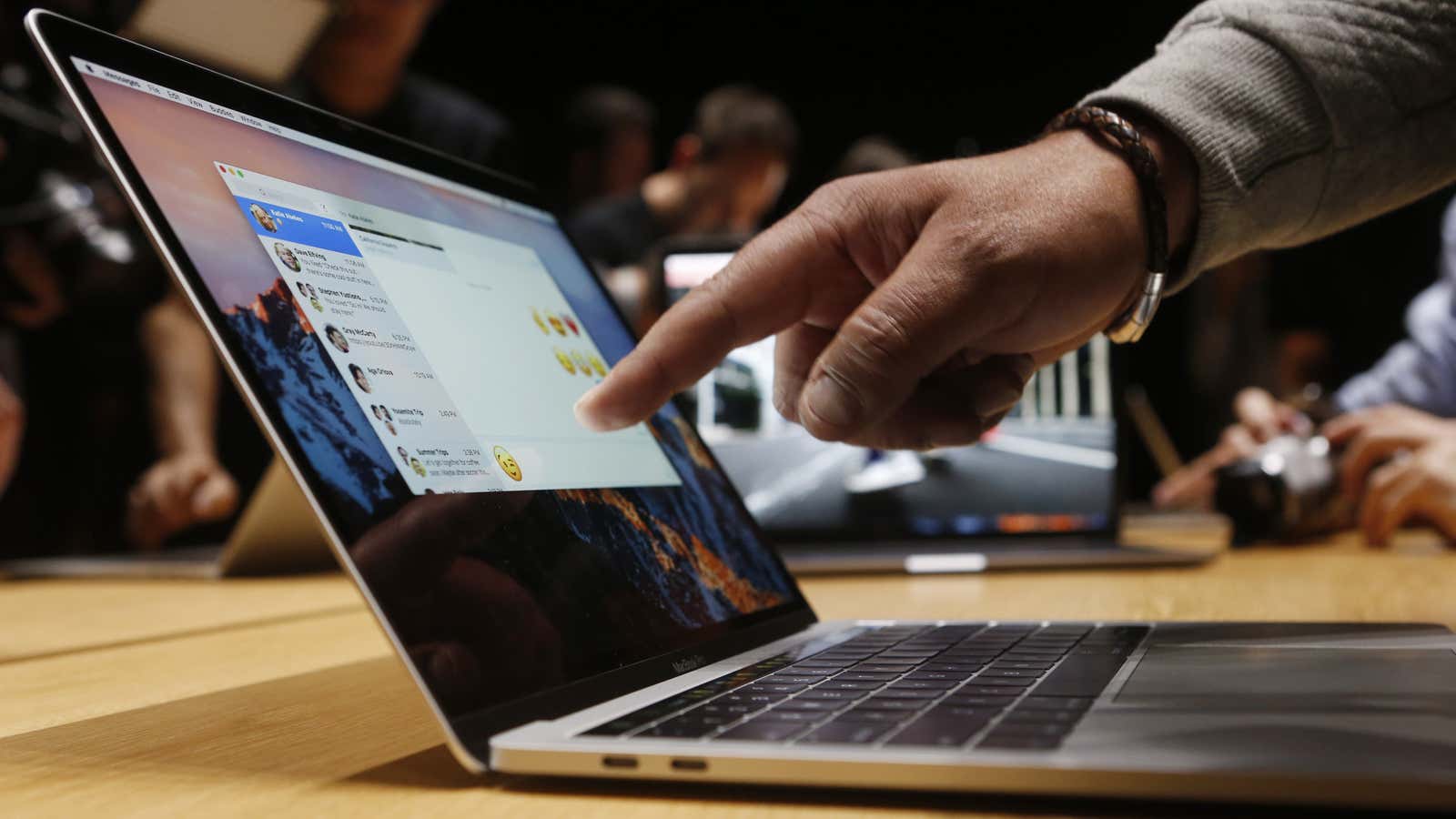Apple’s newest MacBook Pro laptops have been met with mixed reviews. Some are concerned that the laptops are underpowered for the price Apple is charging, especially given that the company is using Intel processors that were released over a year ago.
One way that Apple attempts to make up for the slower, older chips it’s using in its newest MacBooks and MacBook Pros is to lean into a piece of marketing jargon invented by Intel. On every marketing and purchase page on Apple’s website, the company makes sure to mention something called Turbo Boost alongside a computer’s clock speed—the measurement of how fast a computer’s processor runs. Turbo Boost is a term invented by Intel to show that its processors can withstand being forced to run a little faster than they are listed as being able to do.
In the case of Apple’s newest, cheapest, MacBook Pro, that means the processor, which is listed as running at 2 GHz can withstand being run at up to 3.1 GHz for periods of time. You have no control over this—the computer will automatically over-clock the processor when it thinks it’s needed: “Whether the processor enters into Intel Turbo Boost Technology and the amount of time the processor spends in that state depends on the workload and operating environment,” Intel says on its marketing page about the technology.
But seeing as this technology is inherent to Intel’s chips, rather than something Apple has come up with, it’s obviously also available in every other companies’ computers that uses the same line of Intel chips. Popular laptops from Lenovo, HP, and Dell all have chips that have Turbo Boost, but none of these companies uses Intel’s term in its marketing. Dell says that its laptops have speeds “up to” their Turbo Boost speeds, as does HP, and Lenovo just doesn’t mention it.
To be fair, Apple is clearer than some PC makers about what the base processor speed is, by providing that separately from the boost speed. Dell, for example, says that its XPS 13 laptop has a seventh-generation Intel Core i5-7200U processor that runs “up to 3.1 GHz,” which on Intel’s site is listed as a 2.5 GHz processor that can Turbo Boost up to 3.1 GHz.
It’s not entirely clear when Apple began employing the “Turbo Boost” term—it started using Intel chips in its computers 11 years ago, and there are questions on Apple’s support page asking what the term means from 2012.
The speed of processors is most relevant for computing-intensive tasks, such as editing videos or playing videogames. It’s unlikely to be a major factor affecting the zippiness of your experience browsing the web or working on text documents. But for people shelling out thousands of dollars for Apple’s highest-end laptops, it’s worth knowing how the computing power compares to what’s available elsewhere, especially when some Windows competitors use newer Intel technology.
Apple has addressed why it’s using the older processors in its new MacBook Pros: Newer Intel chips were not available at the different sizes that Apple wanted for all of its new laptops. But, add the older processors to the concerns over the sheer number of adapters you’d need to buy to have the same types of ports available on last year’s laptops, the lack of the safe power cable Apple employed for a decade, and the questions over whether the new Touch Bar screen is worth the additional cost, and it’s easy to see why some longtime Mac users are considering switching to Windows machines.
